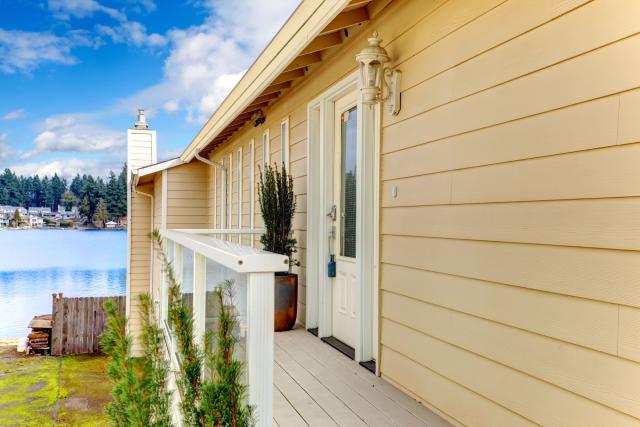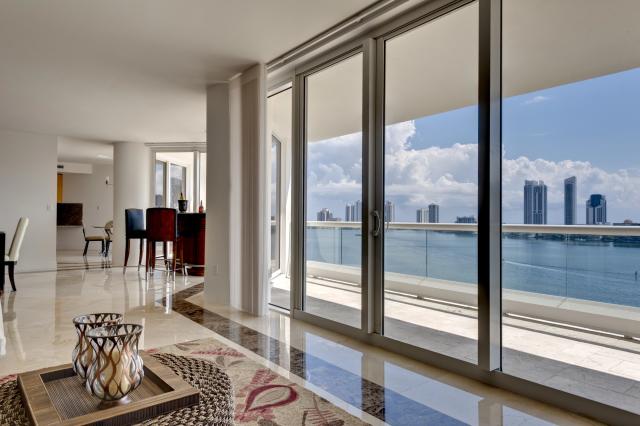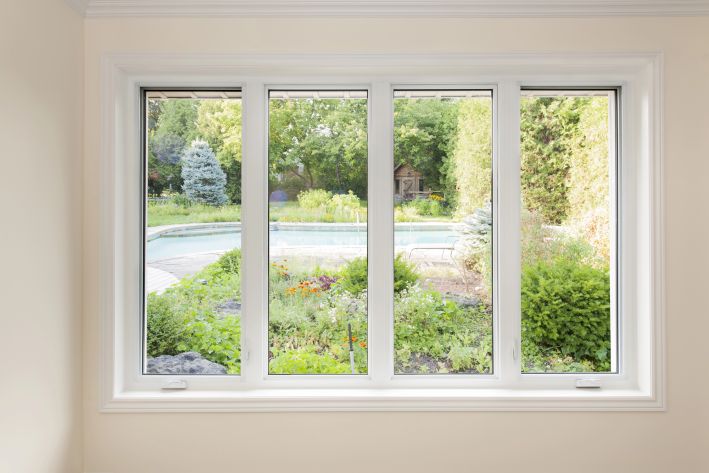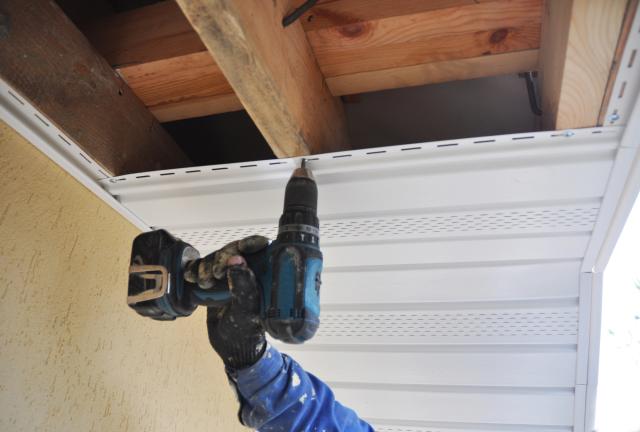
Best House Siding Options: A Money-Saving Guide for Smart...
Choosing the right siding for your house means balancing upfront costs against long-term performa...

Window replacement ranks among the most necessary yet expensive home improvements you'll face. Budget-friendly windows aren't automatically inferior—they often represent strategic choices about materials, installation, and timing that deliver excellent value for your investment. Aging windows create three primary issues: drafts that increase energy bills, visible wear that affects curb appeal, and poor insulation that makes your home uncomfortable. Quality budget windows can address these problems effectively when properly installed. Drafts develop when windows lose their seal against outdoor elements. The difference between budget and premium options often comes down to construction quality and weatherstripping materials rather than the window's ability to stop air leakage.
Common Window Problems and Budget Solutions
|
Problem |
Budget Solution |
Premium Solution |
Cost Difference |
|---|---|---|---|
|
Drafts |
Vinyl windows with basic weatherstripping |
Fiberglass with advanced sealing |
$150-$300 per window |
|
Wear and tear |
Aluminum with standard finish |
Wood-clad with protective coating |
$200-$400 per window |
|
Energy efficiency |
Double-pane with air fill |
Triple-pane with argon gas |
$150-$250 per window |
|
Noise reduction |
Standard double-pane |
Laminated glass package |
$100-$200 per window |
Best for: Focus your premium budget on south and west-facing windows that endure the most sun exposure and weather damage. North-facing windows can often use more economical options without sacrificing performance.
Budget-friendly windows still deliver substantial improvements in home comfort and energy efficiency. The key lies in selecting the right type for your specific needs rather than assuming higher cost automatically means better performance.
Vinyl windows offer the most affordable entry point, typically costing 30-40% less than wood alternatives while providing good insulation properties. However, poorly constructed budget windows can cost more over time through several factors:
Mid-range windows often represent the sweet spot for most homeowners. These windows feature better hardware, more substantial frames, and improved energy efficiency ratings without premium pricing.
Energy savings from quality windows can offset their higher initial cost within 5-10 years, depending on your climate and utility rates. Even moderately priced double-pane windows reduce energy loss by 30-50% compared to single-pane alternatives, making them worthwhile despite higher upfront costs.
Installation quality matters more than window brand. Properly installed budget windows will outperform poorly installed premium windows every time. This makes your choice of installer as important as your choice of windows—sometimes more so.
You can make informed decisions about where to economize and where to invest by understanding the relationship between short-term costs and long-term value, ultimately achieving the best return on your window replacement project.
The right window material choice can transform your home and help you find budget-friendly window solutions. Budget-conscious homeowners can balance their original investment with durability and energy efficiency to save money now and later.
Vinyl windows rule the replacement market and with good reason, too - they offer excellent value without compromising performance. These windows resist moisture and need no painting or staining because they're made from polyvinyl chloride (PVC) with UV stabilizers.
|
Vinyl Window Benefits |
Details |
|---|---|
|
Cost Range |
$100-$300 per window |
|
Installation Cost |
$100-$200 per window |
|
Maintenance |
Minimal - occasional cleaning only |
|
Energy Efficiency |
Hollow cavities can be filled with insulation |
|
Lifespan |
Typically 20+ years |
Multi-chambered designs in vinyl frames work as insulation pockets that reduce heat transfer and block noise. Modern vinyl windows come in various styles including single-hung, double-hung, and sliding designs, though color options remain limited compared to other materials.
Pro Tip: Look for vinyl windows with titanium dioxide and UV stabilizers to prevent yellowing and degradation over time.
Aluminum and fiberglass each bring unique advantages to homeowners who want something different from vinyl.
Aluminum windows complement contemporary aesthetics perfectly. Large openings benefit from their strength and lightweight nature. These windows need minimal maintenance and come powder-coated in many colors. The downside is evident in their heat conductivity, making them less energy-efficient without thermal breaks.
Fiberglass windows stand out with their exceptional durability and insulation. Temperature extremes (-40°F to 350°F) barely affect them. These windows last 50-80 years - double the lifespan of aluminum windows. Their thermal performance excels because fiberglass conducts heat 500 times less than aluminum. The price tag runs about 30% higher than vinyl, which remains the biggest drawback.
Your choice of installation method affects both cost and performance.
Insert window replacement (pocket replacement) fits new windows inside existing frames. This method:
Full-frame replacement strips everything down to the studs. The cost jumps to $180-$1500 per window, but you get:
Your existing frames' condition should guide your choice. Insert replacement saves money if your frames look solid and you like your current window size and style. The investment in full-frame replacement pays off long-term if you need more extensive changes.

The market offers several budget-friendly window replacement options that work great. A 2025 survey of 1,000 homeowners shows Harvey and Window World are the most affordable brands at $338 and $421 per window. Premium brands like Marvin and Ply Gem cost much more, with average prices of $742 and $897 per window.
|
Brand |
Average Cost Per Window (Installed) |
Notable Features |
|---|---|---|
|
Harvey |
Vinyl: $500–1,500; Wood (Majestic): $950–$3,000 |
Durable, energy-efficient vinyl; custom styles, limited to East Coast markets |
|
Window World |
Affordable range (survey): $338 |
Budget-friendly, widely available chain |
|
Marvin |
Premium range: around $742–$897 in survey |
High-end materials, renowned craftsmanship |
|
Renewal by Andersen |
Survey average: $554 (range $338–$897) |
Multiple styles, high customization |
|
Milgard |
$400–$1,800 per window installed |
Variety of materials, strong West Coast presence |
Pro Tip: Don't just look at the price tag. Calculate your total ownership cost by including energy savings. Energy Star-certified windows can cut utility bills by up to 13%. This helps offset higher upfront costs over time.
Consumer Reports tests show budget-friendly vinyl windows often work better than expensive wood-frame options for wind and rain resistance. Vinyl windows dominate the replacement market because they offer great value and need no painting or staining.
Key performance ratings you should know:
Remodeling Magazine's 2024 Cost vs. Value report has interesting numbers. Replacing ten 3x5-foot double-hung vinyl windows costs about $21,264 but gives you a 67.1% return on investment.
Renewal by Andersen gets top marks for its Fibrex composite material. This material combines wood's strength with vinyl's easy maintenance. Window World remains a favorite among budget-conscious homeowners. They offer affordable prices and solid performance metrics.
Home windows differ from cheap window replacement for car options. They need to balance quick savings with decades of performance. That's why energy efficiency ratings matter so much for long-term value.
Smart timing of your window purchase can cut costs by a lot without compromising quality. Shoppers who know industry patterns and utilize available options can save hundreds—maybe even thousands—on their window replacement projects.
The calendar plays a vital role in getting the best deals on windows. Winter months (December through February) offer the biggest discounts, and companies often provide their best promotions during this slower season. Contractors give special pricing during colder months to keep business flowing when construction slows down. You might find deals like 0% financing for 60 months or even 50% off windows during these periods.
|
Season |
Advantages |
Potential Savings |
|---|---|---|
|
Winter (Dec-Feb) |
Best deals, shorter wait times |
Up to 50% off retail |
|
Spring/Fall |
Comfortable installation weather |
Minimal discounts |
|
Summer |
Extended daylight for work |
A few special offers |
Volume purchasing opens another path to savings. Windows get cheaper by the dozen—buying multiple units at once leads to bulk discounts. Suppliers typically offer 25-30% off when you order 8 or more windows.
Pro Tip: Replace all windows at once, rather than doing it in phases. The upfront cost may seem higher, but volume discounts and avoiding future price increases make this a more financially sound choice.
Your choice of installation method affects your final cost. DIY installation eliminates labor costs, which typically range from $100 to $300 per window. A simple window costs $100-$300, so installing it yourself could cut your total expense in half.
This approach, however, comes with its risks. A 2018 survey of 2,000 DIY homeowners revealed:
Poor installation can void manufacturer warranties and lead to expensive problems, such as air leakage, moisture infiltration, and structural damage. Professional installation proves more affordable in the long run unless you have advanced construction skills.
Window companies offer various financing solutions to make replacement projects more affordable. Common options include:
Warranty coverage differs among manufacturers. Quality warranties typically protect:
Some companies offer transferable warranties that new homeowners can use, which might increase your home's resale value. Read warranty exclusions carefully—some have unexpected limits like not covering homes within 5 miles of water bodies.
Pro Tip: Discuss better pricing options with your suppliers. Window companies and authorized dealers usually negotiate, especially for multiple-window projects.
Customer experiences and independent tests tell us more about windows than marketing materials ever do. Homeowners looking for cheap window replacement options need to learn about how different materials work in ground conditions. This knowledge is a great way to get guidance beyond just looking at price tags.
Consumer Reports' tests revealed something surprising: frame material doesn't guarantee performance or justify the price. Their tests discovered excellent vinyl-frame windows that worked better than expensive wood-frame options. The top-rated wood window performed like a vinyl window that cost nowhere near as much.
|
Feature |
Vinyl Windows |
Composite Windows |
|---|---|---|
|
Cost |
Typically lowest priced |
More expensive than vinyl |
|
Lifespan |
Approximately 30 years |
40+ years |
|
Energy Efficiency |
Highly efficient, can include foam insulation |
Superior air infiltration performance |
|
Durability |
Can warp in extreme heat |
Less susceptible to warping |
|
Maintenance |
Minimal, cannot be painted |
Low maintenance, no painting needed |
Composite windows excel at structural stability and maintain tighter seals over time. Vinyl windows feature superior welded corners that prevent air from getting in.
Pro Tip: The window's overall energy performance ratings matter more than frame material. U-factor and Solar Heat Gain Coefficient are more important than choosing between vinyl or composite.
Reddit and Houzz discussions gave an explanation about budget window performance. Users agree on one point: "there is no such thing as a good quality inexpensive window". This suggests buyers need to shop carefully.
Reddit users reported good experiences with Window World windows, which cost around $190 per window and came with excellent long-term support. Manufacturer warranties differ substantially - some cover both materials and labor, while others don't.
Houzz users mentioned that budget options like Milgard Style Line and entry-level Jeld-Wen from Home Depot cost about the same. Independent Pella dealers charged twice as much. These price differences lead many homeowners looking for cheap window replacement for car to apply the same thinking to home windows. They often underestimate how important long-term performance is.
Installation quality matters just as much as the window itself. Budget-friendly windows work well with professional installation, while premium products can fail with poor installation.
The real financial story of window replacement goes beyond just the upfront costs. Most homeowners look at the price tag first, but quality windows can bring amazing returns over time.
A typical window replacement costs around $554 per window, with most homeowners paying between $338 and $897. Labor costs range from $100 to $300 per window. Complex installations might cost $600 or more. The final price depends on several key factors:
|
Factor |
Cost Impact |
Price Range |
|---|---|---|
|
Frame Material |
Most Important |
Aluminum: $75–400; Composite: $300–1,200; Fiberglass: $500–1,500; Vinyl: $100–900; Wood: $150–1,300 |
|
Window Style |
Moderate |
Single-hung ($100-$400), Double-hung ($150-$650), Sliding ($150-$800), Casement ($150-$1000), Bay ($900-$7100) |
|
Installation |
Variable |
$100-$300 per window (standard), $600+ (complex installations) |
Pro Tip: Need a quick budget number? Simply multiply your window count by $750, which is the average total cost per window.
Window replacement stands out as one of the best home improvements for returns. You can get back 67-85% of your money. This makes window replacement a better financial choice than many other home upgrades.
The returns vary by material. Vinyl windows give back 67.1-74.3%, which beats wood windows at 62.9-69.5%. ENERGY STAR-certified windows can cut your heating and cooling bills by 12-13% each year. These savings add up beyond just the home's resale value.
Here's a real example: if you spend $4,500 replacing ten windows with an 85% ROI, you could add $8,325 to your home's value. This is a big deal as it means that your investment pays off well.
Quality window replacement doesn't have to break the bank. This piece shows how budget-friendly options can fix common problems like drafts and wear while delivering excellent long-term value. Most homeowners find vinyl windows to be the most affordable option. These windows are impressively durable and need minimal maintenance compared to premium alternatives.
Smart timing and strategy can make a big difference. The best deals usually pop up during winter months, and buying in bulk can lead to substantial savings. DIY installation might look appealing, but professional installation tends to save money over time. It helps avoid costly mistakes and keeps manufacturer warranties intact.
Window replacement works as both an expense and an investment. Quality windows can reduce energy costs by up to 13% annually with ROI rates between 67-85%. The smart approach focuses on overall value rather than picking the cheapest option. A balanced decision that weighs upfront costs against energy efficiency ratings, warranty coverage, and installation quality will boost your home's comfort, appearance, and value for decades.
Smart window replacement strategies can save thousands while delivering excellent performance and long-term value for your home investment.
• Time your purchase strategically - Winter months offer up to 50% discounts as contractors seek business during slow seasons
• Choose vinyl windows for maximum value - They cost $100-$300 per window, require minimal maintenance, and last 20+ years without painting
• Consider bulk ordering - Replacing 8+ windows simultaneously typically yields 25-30% volume discounts from suppliers
• Focus on energy efficiency over price alone - ENERGY STAR windows reduce utility bills by 13% annually, offsetting higher costs within 3-7 years
• Expect strong ROI - Window replacement returns 67-85% of investment at resale, making it one of the best home improvement investments
Professional installation typically proves more cost-effective than DIY despite higher upfront costs, as it prevents warranty voids and costly mistakes. Remember that the cheapest immediate option isn't always the most economical over a window's 20-30 year lifespan.
GET THE ESSENCE OF RELEVANT HOME
IMPROVEMENT TOPICS IN LESS THAN 5 MINUTES

Best House Siding Options: A Money-Saving Guide for Smart...
Choosing the right siding for your house means balancing upfront costs against long-term performa...

Roof fascia boards protect your home from water damage during every rainstorm, yet most homeowner...

Thanks for joining our homeowners’ community.
Stay tuned!
Choose the category
Choose the category